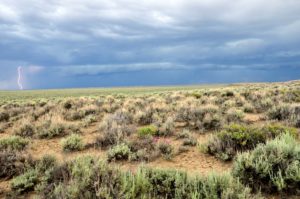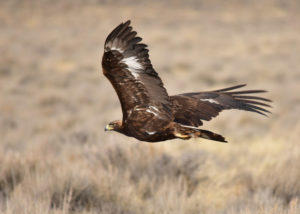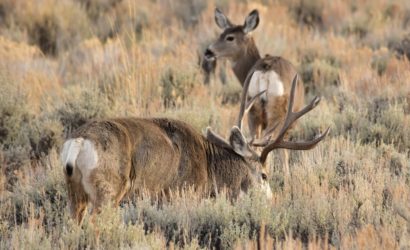We have much more to do and your continued support is needed now more than ever.
Changes to Conservation Plans Imperil the Greater Sage-Grouse

Stretching across the western United States, an immense sagebrush sea provides a home for some 350 different plant and animal species, including mule deer, golden eagles, antelope and elk. The most famous resident of this unique habitat is an extraordinary bird called the Greater Sage-Grouse. Known for its flamboyant mating dance, the sage grouse is found nowhere else on earth and once numbered as many as 16 million. Now there are fewer than 500,000.

In order to revive those numbers – but also avoid a regulatory burdensome Endangered Species Act listing – a bipartisan coalition of western governors, ranchers, outdoor enthusiasts, and conservationists came together 8 years ago to develop a common-sense strategy of conservation. The resulting 2015 sage grouse plans protected 10 million acres of priority habitat across eleven states and balanced the many economic interests of the West with safeguards for the sagebrush habitat. It was a triumph of cooperation.
Now the Trump administration has bowed to oil and gas industry pressure and decided to dismantle those comprehensive protections. The revised plans, which were devised by Acting Secretary David Bernhardt, significantly weaken the 2015 agreement by exposing 8 million acres of critical sage grouse habitat to oil and gas development and weakening protections in another 43 million acres. And they abdicate any federal responsibility for protecting this rare bird and put a huge burden on the states.
Specifically, the new directive removes safety buffers around fragile grouse breeding areas and allows oil leasing in these sensitive regions. It allows waivers and loopholes so that companies can build structures on sage grouse lands. It no longer prioritizes drilling in other regions first, before considering sage grouse areas. Perhaps most importantly, the federal government will no longer require that oil and gas companies mitigate the damage they cause to the sage grouse habitat.

This new directive is an affront to the 300,000 people who have spoken up in support of the 2015 plans that were created by the people who know these lands best. It is an affront to the overwhelming scientific evidence which shows that protecting this habitat is the only way to protect the sage grouse. And it is an affront to the local communities and businesses that depend on a healthy sagebrush landscape to support a one billion dollar outdoor recreation economy.
By allowing oil and gas industry representatives to rewrite the sage grouse plans, the Trump administration is undermining the good-faith deal that was negotiated by a diverse group of stakeholders. These new directives jeopardize local communities and businesses. Most importantly, this abrupt change in course imperils the survival of the Greater Sage-Grouse and hundreds of other plant and animal species who live in the sagebrush steppe.

It’s now up to the states – in particular, western governors– to ensure that the Department of Interior does not grant all the waivers and exceptions on a project-by-project basis. It’s up to the governors to ensure Interior does not lease lands in the middle of important sage grouse habitat. Having a state-by-state, patchwork approach to landscape-scale conservation is never a good idea. Now, we need the governors to adhere to the spirit of cooperation that guided the 2015 plans. We trust they will honor the spirit of that deal to protect these extraordinary lands for generations to come.
Help us spread the word about protecting the sagebrush sea and the wildlife that call it home by retweeting:
.@BLMNational & @Interior just walked away from historic plans to save #sagegrouse, removing protections for 51 million acres of #PublicLands. Now, it is up to EVERY western governor to #SaveGrouse & its habitat. No waivers, no loopholes, no exceptions! https://t.co/iTjZ6qJ5ka pic.twitter.com/nxRB5gTA31
— Wildlife Action (@wildlifeaction) March 15, 2019





















